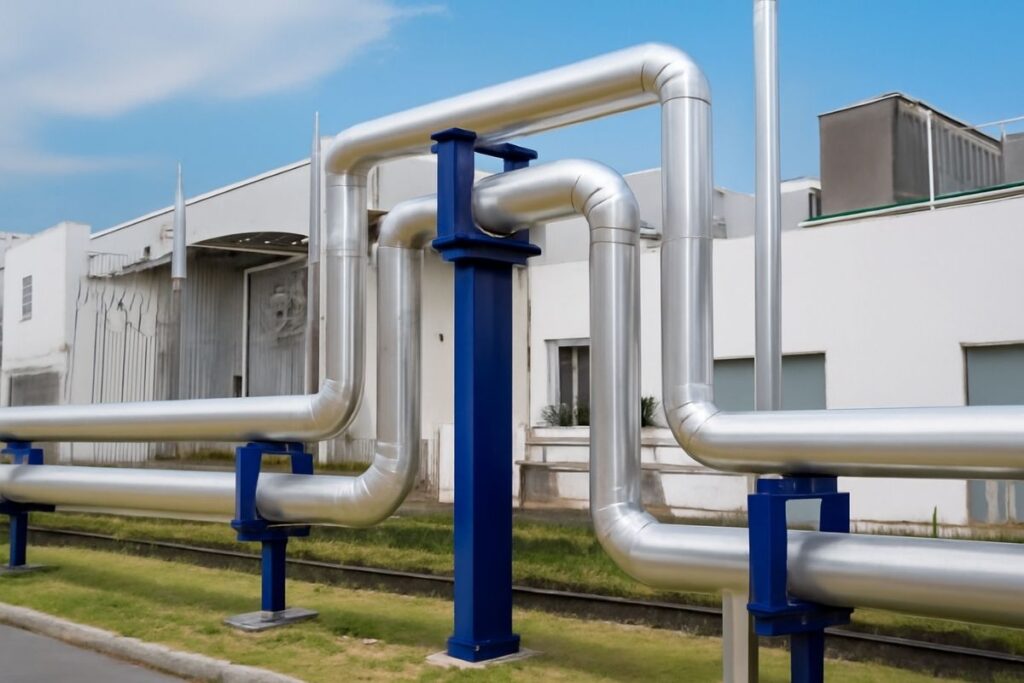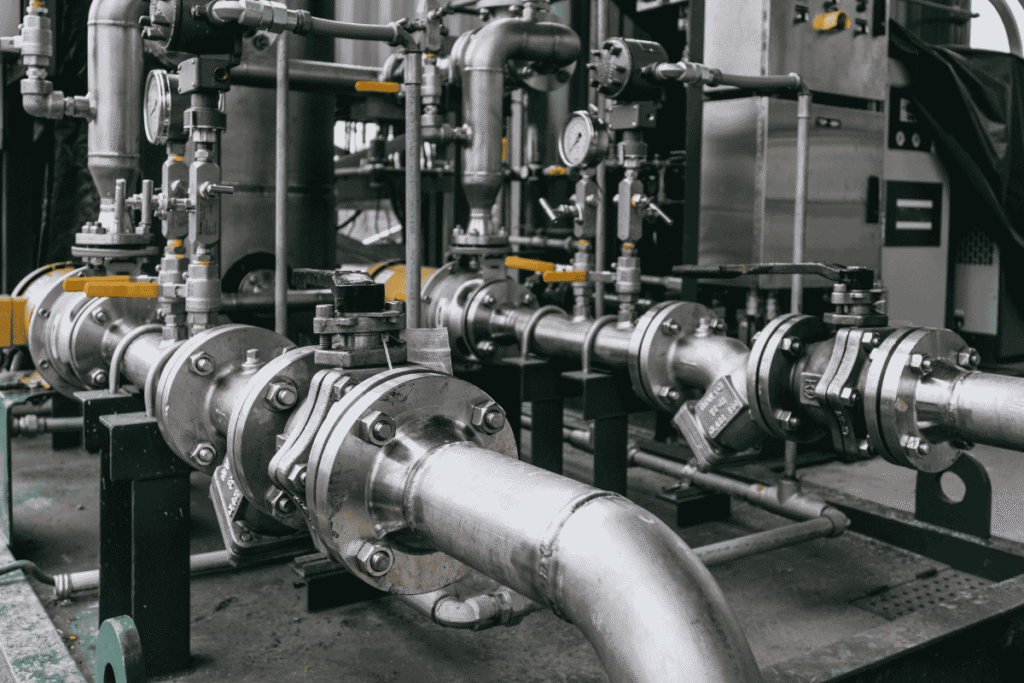In the world of modern infrastructure and energy distribution, the efficiency, safety, and capacity of pipelines are crucial for uninterrupted operations. Whether transporting natural gas, crude oil, or other fluid resources, pipelines form the backbone of global energy systems. A critical technique used to optimize these systems is pipeline looping.
So, what is pipeline looping? In simple terms, pipeline looping is a cost-effective method to increase the capacity of a pipeline system without constructing an entirely new route. It involves the installation of an additional pipe—commonly called a loop—that runs parallel to the main line and connects back at specific points. This technique enhances volume throughput, reduces pressure drops, and improves flow reliability.
In this article, we will explore what pipeline looping is, how it works, its core benefits, real-world applications, and why it has become an essential engineering solution in today’s pipeline infrastructure.
🔍 What is Pipeline Looping?
Pipeline looping is a process where an extra pipeline, or loop, is laid parallel to an existing pipeline and is integrated into the system at various intervals. This loop functions in conjunction with the original pipeline to increase flow capacity or to maintain flow under higher pressure demands.
The concept is rooted in hydraulic engineering, where pressure drop and friction loss increase with longer distances and higher throughput. By introducing a loop, engineers effectively divide the flow, reducing stress on the original line and enhancing efficiency.
➕ Technical Definition:
Pipeline looping is the construction of a secondary pipe, typically of the same diameter and specification, installed alongside a primary pipeline and connected at appropriate locations to increase the system’s flow capacity and reliability.
⚙️ How Does Pipeline Looping Work?
To understand the mechanism of pipeline looping, imagine a single pipeline that is reaching its maximum carrying capacity. Rather than replacing it or building an entirely new pipeline system (which is expensive and time-consuming), engineers install a looping segment—a second pipe running parallel for a portion of the route.
The loop connects at specific points, often where flow bottlenecks or pressure drops are highest. These interconnections allow the fluid (gas, oil, water, etc.) to flow through both pipelines simultaneously, thereby improving volume throughput and pressure balance.
🔧 Key Components Involved:
- Looped pipeline segment (same or varied diameter)
- Interconnection valves
- Compressor or pumping stations
- Flow metering and monitoring units
The design and operation of a looped system must consider hydraulic modeling to ensure that flow distribution, pressure gradients, and operational safety remain balanced.
📈 Why is Pipeline Looping Important?
Now that you understand what is pipeline looping, it’s essential to know why this technique is crucial in pipeline infrastructure. Let’s break down the core benefits:
1. 🚀 Increased Capacity Without New Route Construction
One of the biggest advantages of pipeline looping is that it significantly boosts flow capacity without requiring an entirely new pipeline route. This reduces construction costs, land acquisition issues, and regulatory hurdles.
2. 💸 Cost-Effective and Scalable
Compared to constructing a new pipeline, looping is more economical and allows modular scalability. New loops can be added in stages depending on the increasing demand.
3. 🛡️ Improved Safety and Pressure Control
By distributing pressure more evenly between two pipelines, the overall system becomes safer. Looping also provides redundancy in case of a maintenance requirement or unforeseen failure in one segment.
4. 🌍 Environmental and Regulatory Compliance
Installing a loop is usually less disruptive to the environment since it runs along an already-established right-of-way (ROW). This results in fewer environmental assessments, minimized land use, and smoother permitting processes.
5. 🔁 Operational Flexibility
Pipeline looping allows for better operational flexibility. Operators can reroute flow, conduct system maintenance without total shutdown, and adapt the pipeline for future capacity expansions.
🛠️ Types of Pipeline Looping
Different pipeline looping configurations are used depending on the operational goals, terrain, and fluid properties. Here are the most common types:
1. Full Looping
Involves installing a new pipeline alongside the entire length of the existing pipeline. This is typically done when large capacity upgrades are needed.
2. Partial Looping
Only specific segments of the pipeline are looped—usually the high-demand or high-pressure zones.
3. Segmental Looping
Multiple loops are installed at intermittent sections. This is common in longer pipelines where full looping would be cost-prohibitive.
4. Pressure-Balanced Looping
Here, loops are designed not just for flow capacity but to manage and stabilize pressure across a wide operational range.
🧠 Real-World Example of Pipeline Looping
Let’s look at a practical example to solidify your understanding of what is pipeline looping.
🏗️ Case Study: Natural Gas Transmission Looping
In several countries, such as Bangladesh, natural gas is delivered over extensive distances through large-scale pipeline networks.. Over time, as industrial demand grows, existing pipelines often become insufficient in carrying capacity.
Instead of building new pipelines from scratch—which would involve significant cost, land procurement, and time—companies opt for looping the high-demand sections. These new loops help distribute flow, maintain consistent supply, and reduce load on older pipelines. This is especially useful in urban or industrial zones with limited space and high pressure needs.
🧾 Regulatory and Engineering Considerations
While pipeline looping is efficient, it’s not without regulations. Authorities such as the Department of Energy (DOE), Environmental Protection Agencies (EPA), and local energy boards must approve looping projects.
Key considerations:
- Hydraulic and flow modeling
- Pressure safety analysis
- Environmental impact assessment
- Construction and inspection standards
- Cathodic protection for corrosion control
- Smart pigging and inline inspections
Ensuring safety, compliance, and sustainability is paramount in any looping project.
🌟 Final Thoughts: Why You Should Care About Pipeline Looping
As the global demand for energy continues to rise, infrastructure must evolve intelligently. Pipeline looping stands out as a powerful solution that enhances performance, improves safety, and supports scalable growth in pipeline networks.
Whether you are an engineer, project manager, stakeholder, or just someone interested in infrastructure development, understanding what pipeline looping is will give you insight into how modern systems are built to be efficient, sustainable, and future-ready.
In the end, pipeline looping is not just about adding more pipes—it’s about smart engineering, cost-efficiency, and planning for tomorrow’s energy needs.




